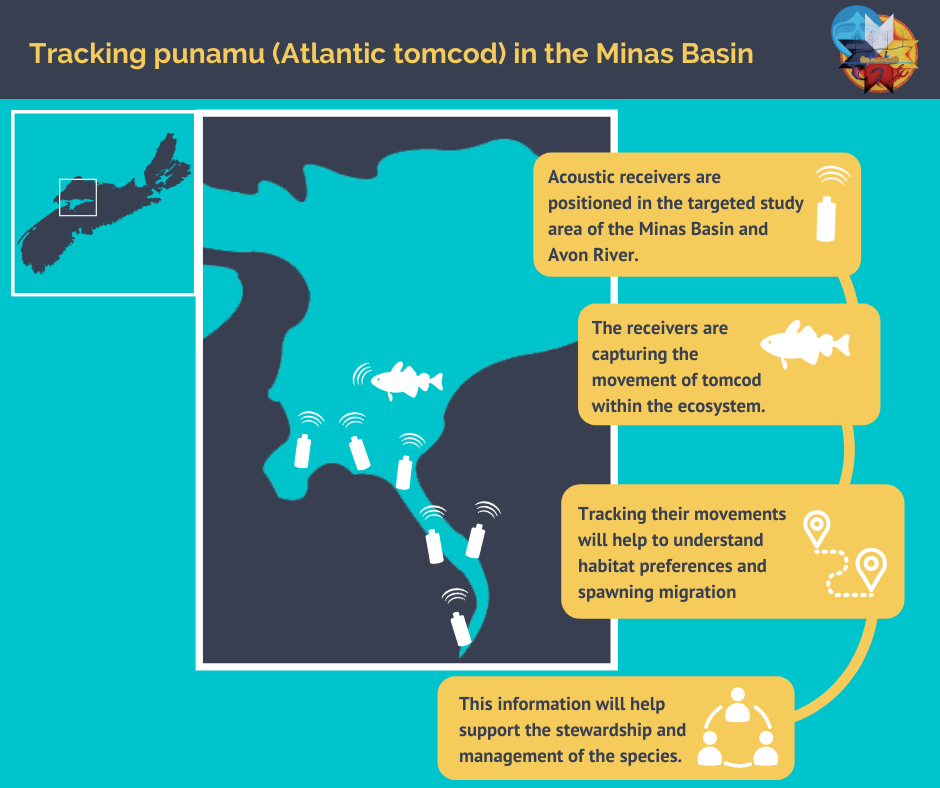With the help of the Ocean Tracking Network field team, Apoqnmatulti’k has receivers positioned at the main entrances to the Bras d’Or Lake.
These receivers will capture the movement of katew (American eel) between the Bras d'Or Lake and the Atlantic Ocean, and provide insight into the length of time the species inhabits the lake.
American eel have the greatest range of any fish species in North America. The data collected by the receivers will help fill knowledge gaps in eel behaviour and residency patterns, as well as determine essential winter and feeding grounds.
Mi'kmaq rely on eel in the Bras d’Or Lake for food and ceremonial purposes. Learning more about how eel use the lake and surrounding coastal ponds is essential for the transfer of knowledge and culture, as well as the sustainable management of the species.
Apoqnmatulti’k project partners Acadia University and Marine Institute of Natural and Academic Science have deployed acoustic receivers throughout the Minas Basin and surrounding watershed to monitor the movements of several fish species, including katew (American eel).
The data collected is helping us better understand eel feeding and habitat preferences, and identify potential interactions with human activity in the area.
Learning more about how eel use this ecosystem is essential for the transfer of knowledge and culture, and enhancing stewardship of the species.
There is little known about punamu (Atlantic tomcod) movement in the Minas Basin and surrounding watershed. Through Apoqnmatulti’k, we’re hoping to learn more about tomcod habitat preferences and spawning migrations, and gain a better understanding of how they use this ecosystem.
This research is only possible with help from our project partners at Acadia University and Marine Institute of Natural and Academic Science. For years, they’ve been deploying acoustic receivers to track several fish species in the area, including tomcod!
Jakej (American lobster) are an important food source for the Mi'kmaq and have been for hundreds of years. However, little is known about how environmental conditions influence their movements.
In the Bras d'Or Lake, a VPS (Vemco positioning system) array of acoustic receivers log the locations of lobster. The receivers form ‘listening lines’ that detect tagged lobsters within their range. A VPS array is specially designed, and provides a more detailed picture of how lobster move within an area.
Tracking lobster will help us learn about their movements in the Lake, which is essential for future management and conservation of this species.




